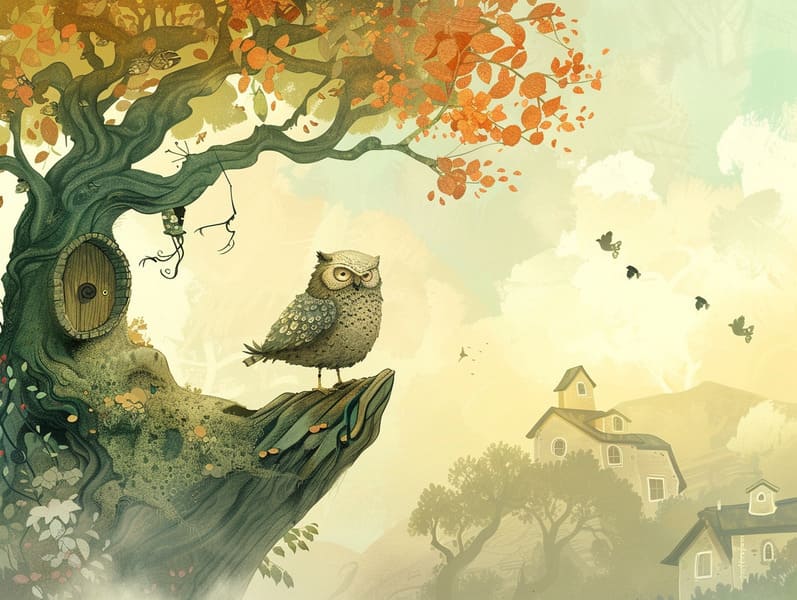
Children's fairy tales have historical significance. These narratives have been narrated from one generation to the next centuries before they were ever published. They emerged from a variety of societies, including African traditions. They were initially passed along among older generations, often carrying themes and messages concerning the societal norms and beliefs of the time.
Jacob and Wilhelm Grimm, Jacob and Wilhelm (the Grimm brothers), were among the first to collect many of these beloved tales. Their collection, "Grimm's Fables," included tales like "The Little Glass Slipper," "Hansel and Grethel," and "Snow White," which have since become pillars in the world of timeless fairy tales. Similarly, Andersen's whimsical tales, such as "The Mermaid," and "The Story of the Ugly Duckling," have captivated hearts worldwide, cementing their place in the pantheon of classic fairy tales.
Even though they are old, these stories remain as impactful as ever, especially as children's bedtime stories. These enchanting tales are now available in many formats, including vividly illustrated books, enchanting animations, and digital fairy tales.
Their persistent charm can be connected to several enchanting factors:
Life Lessons: Ancient fairy tales often convey important moral lessons. Tales like "The Boy Who Cried Wolf" teach the value of honesty, while "The Hare and the Tortoise" illustrate the qualities of perseverance and unassuming nature. These tales offer kids clear distinctions between ethical and unethical, guiding their moral compass in a gentle yet lasting way.
Warmth and Understanding: Classic fairy tales frequently illustrate heroines facing challenges and struggles, encouraging children to resonate with their struggles and rally behind their triumphs. For instance, "Beauty and the Beast" emphasizes the significance of looking past the exterior to appreciate the true essence of a being, building warmth and discernment.
Cultural Appreciation: Many fairy tales are steeped in the cultural contexts from which they bloomed. Discovering these fairy tales can provide captivating looks into different ways of life, promoting a sense of cultural understanding and understanding.
Fantasy and Imagination: The fanciful elements in fairy tales—magical beings—activate children’s creative minds. These narratives move readers to fantasy realms, enlivening creative thinking and a sense of marvel that endures a lifetime.
Traditional fairy tales are not only entrancing but also informative. They work as captivating tools in strengthening various mind and heart abilities in kids. When ancient fairy tales are told out loud, they improve language development by introducing new terms and meanings and complicated sentence structures. This practice also fosters hearing perception and mental focus, as young readers stay focused, looking forward to see what happens next.
Furthermore, deliberating the themes and characters of fairy tales can develop reasoning skills and reasoning skills. The young are educated to recognize patterns, guess what will happen, and grasp cause and effect. These website conversations also support kids say their thoughts and feelings, enhancing their emotional intelligence.
In today’s cyber age, the existence of free fairy tales online has made these tales more acquirable than ever. Websites and programs feature vast collections of popular fairy tales that can be seen or listened via anytime, anywhere. Fairy tales told out loud are particularly well-received, giving an captivating way for little ones to appreciate these charming stories. Voice books and narrated videos bring characters and settings to life, often joined by mesmerizing melodies and songs that enrich the tale-telling adventure.
The timeless fascination of timeless fairy tales lies in their ability to change to the present while keeping hold of their central values. Contemporary modernizations of these fairy tales often showcase more different protagonists and modern settings, making them accessible to today’s audience. However, the underlying themes of valour, empathy, and righteousness remain unchanged, continuing to reach audiences of all ages.
Classic fairy tales also offer a sense of comfort and homeliness. They bring a ordered narrative with a recognizable beginning, middle, and end, often finishing with the closure of conflicts and the triumph of virtue over corruption. This steadiness can be solacing for young ones, imparting a sense of consistency in an dynamic world.
Old fairy tales continue to fascinate and edify new generations, maintaining their splendor and importance in modern society. As kids' bedtime tales, they impart upon a perfect blend of enchantment and education, facilitating moral values, empathy, and creativity. The presence of online fairy tales and the favor of fairy tales spoken ratify that these traditional fairy tales remain acquirable to new generations.
By holding onto and releasing these narratives, we continue to laud the rich tapestry of human imagination and cultural heritage. Whether you are discovering a vibrantly illustrated book, accessing a digital library, or listening to an sound book, the captivation of famous fairy tales is always within reach. These narratives convey of the perpetual ability of stories and its ability to unify us across centuries and lands.
Even if you are viewing a artistically illustrated book, exploring a virtual library, or listening on an read-aloud book, the mystique of old fairy tales is always within reach.
These stories convey of the perpetual impact of storytelling and its ability to link us across generations and cultures, forging a link that delights and instructs alike.